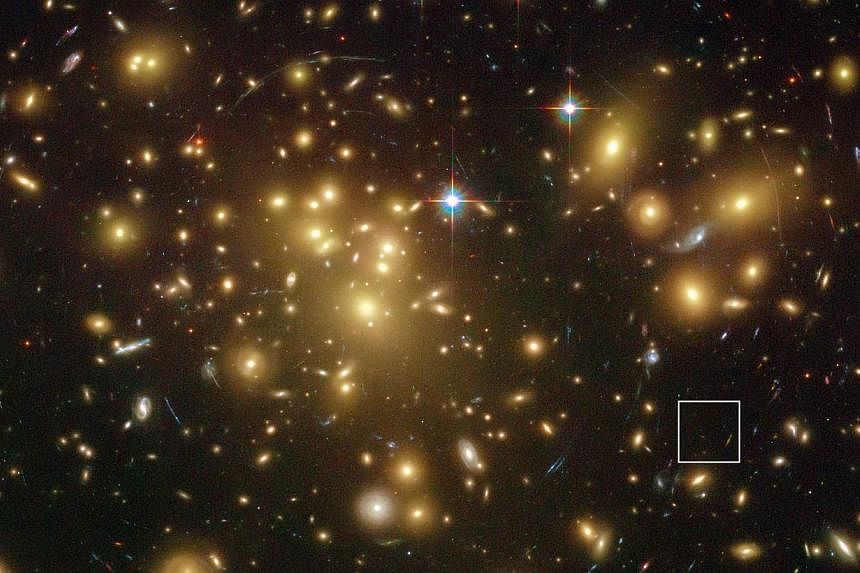PARIS (AFP) - One of the oldest galaxies ever observed has revealed that dust played a vital role in the infancy of the Universe, astronomers reported on Monday.
Grains of dust are the tiny building blocks of the cosmos.
Made from carbon, silicon, magnesium, iron and oxygen, they are formed in the nuclear combustion of a star.
They are spewed into space when the star dies and explodes. Over aeons, clouds of dust and gas coalesce to form new star systems.
The theory is that in the fledgling Universe, gas must have formed the early galaxies as there was no dust to do the job.
But the new research suggests dust played its creative part at a much earlier point than thought.
Astronomers led by Darach Watson at the University of Copenhagen used Europe's mega-observatory, located in Chile's bone-dry Atacama desert, to observe a galaxy called A1689-zD1.
The light reaching Earth from this star cluster is truly ancient, they reported in the journal Nature.
The "redshift" - a benchmark of time and distance - suggests that the source is about 13.1 billion years old, or some 700 million years after the Universe was born in the "Big Bang".
Yet the light signature also points to a galaxy that despite its young age was rich in complex dust, similar even to that of much later galaxies such as our own Milky Way.
"It is the first time dust has been discovered in one of the most distant galaxies ever observed," said Watson. "It is a galaxy of modest size, and yet it is already full of dust. This is very surprising and it tells us that ordinary galaxies were enriched with the heavier elements far faster than expected."
The redshift of A1689-zD1 is seven. Until now, the earliest galactic dust ever spotted had a redshift of 3.2, which equates to some 12.5 billion years ago.
The findings suggest that the galaxy was consistently forming stars by about 560 million years after the Big Bang, "a very short cosmological timeframe, given that most stars live for billions of years", said Watson.
The faint light from the galaxy was snared thanks to a phenomenon called gravitational lensing.
Its glimmer was magnified ninefold as it passed through a spectacular galaxy cluster called Abel 1689 on the way to Earth.

